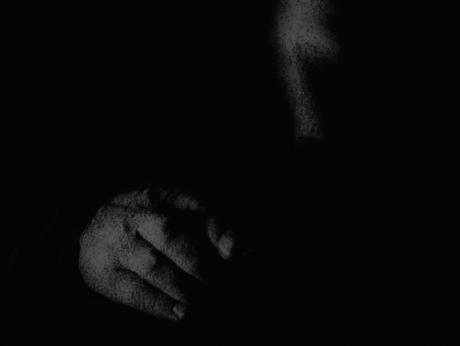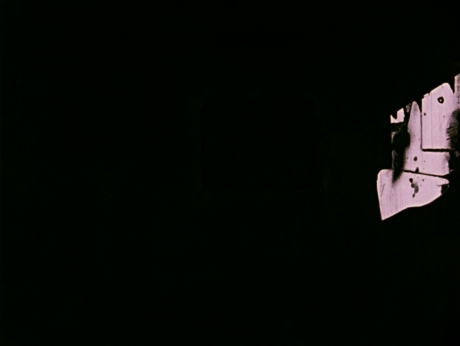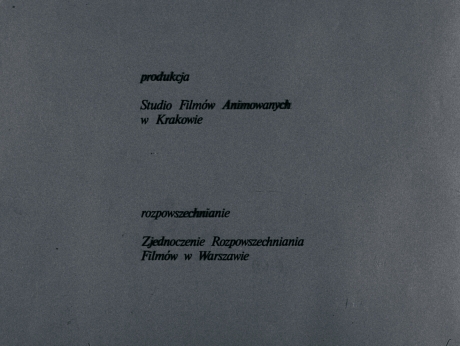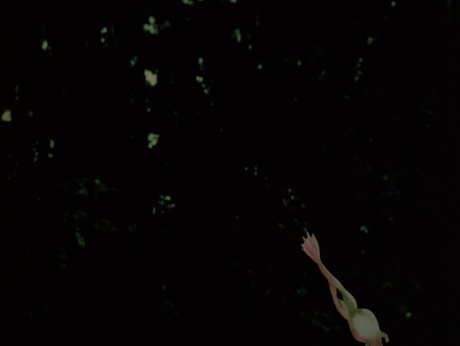
 overview
overview
About the film
Assistant Director: Marek Pieniążek
Assistant Camera: Tadeusz Dzień
Animator: Jerzy Kucia, Marek Pieniążek
Music: Józef Rychlik
Production Manager: Halina Kramarz
Production: Animated Film Studio (Cracow)
Rights: National Film Archive
Language: pl
hide tab

 storyline
storyline
A sunny summer, harvest time. A countryside road, men walking with scythes, women with wooden rakes, a large van full of hay. From the natural sounds of summer – insects’ hums, scratching wheels of the wagon pulled by horses – music arises, and in its rhythm a procession of harvest accessories moves along the screen: sickles, scythes, blades, agricultural machines, mowed grain, beams of hay, harvest festival wreaths. They are accompanied by musical instruments – the violin, ruffle, percussion… and people – happy, ceremonial, like in a parade. A harvest “natural-mechanical ballet” is taking place, the celebration of work and its effects. Harvest time brings back memories and causes reflections.
hide tab

 comment
comment
hide tab



















“The Parade” (1986) is definitely the brightest film that Jerzy Kucia ever made. The light tonality is already visible in “The Spring” (1980), realised six years earlier, a romantic impression about time, in which everything comes to life. This time Kucia dedicated his impression to an even more joyful time of harvest. He made it in a collage manner similar to his film “Splinters” (1984) from two years earlier. The logic of the precedence of events is substituted by a logic of memory, but the editing is more calm – it is no longer so nervous, but even dignified, its character adjusted to the style and content of the story. Kucia made the harvest parade animation in a “parade” way.
Ewa Gołogórska, the co-scriptwriter (as in most of his films), privately his wife, helped him achieve this, as did Józef Rychlik, the composer of the beautiful musical motive with a poetics and atmosphere that reminds us of the very best of Nino Rota. The soundtrack in this film is perfectly built – joyful, parade music, natural sounds (e.g. the sounds of nature and of machines), as well as short elements of silence which greatly co-play with the unrealistic, hallucinatory images (mobile graphics made with a laser copy method), giving a poetic film of rare beauty. That was in fact the intention of the artist. “I find poetry between image and sound” – said Kucia in Jerzy Kapuściński’s TV program “Other Cinema.”
These qualities were appreciated by the jury of several important festivals, awarding “The Parade” with: Main Prize – ex aequo – at the XXXIII International Short Film Festival in Oberhausen, 1987; a Golden Kuker award at the V International Animation Film Festival in Varna, 1987; a Bronze Hobby-Horse award in the animated film category XXVII National Short Film Festival in Cracow, 1987; and the Main Prize – ex aequo – at the II Animated Film Festival „Animafilm” in Zamość, 1988). Jerzy Kucia’s films are a wonderful example of the full cohesion of image, sound, and literary meanings. In his films these elements are inseparable, they constitute a whole. “The Parade” is – along with “The Tuning of instruments” (2000) – the best example of this. Jerzy Armata